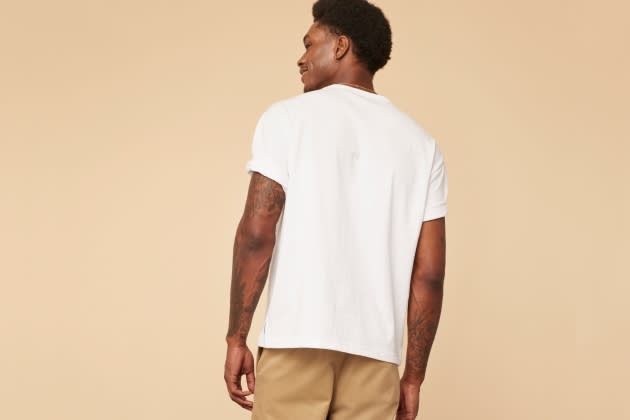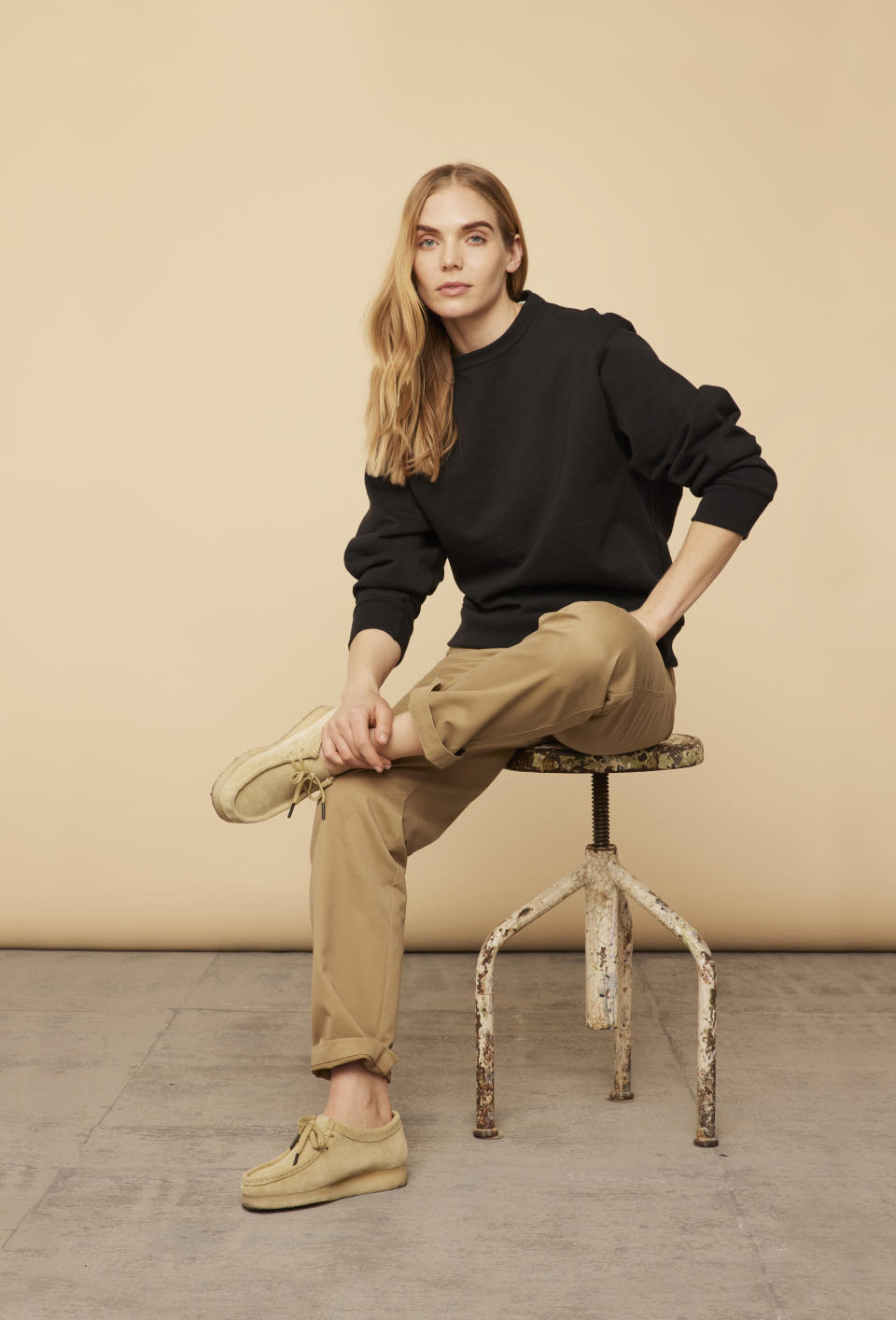Santiago Cucci’s Reinvention Plan for Dockers Is Boosting Sales

Dockers is finally getting some personal attention — and it appears to be paying off.
Right before the start of the pandemic, Santiago Cucci “raised his hand” and suggested to the executives at Dockers’ parent, Levi Strauss & Co., that the brand would perform better if it had a team dedicated to it. The top management agreed and named Cucci, a 10-year veteran of Levi’s who had been managing director of both Levi’s and Dockers for four years, the brand’s chief executive officer.
More from WWD
Cucci, who is of French and Spanish descent, was no stranger to running brands. Before joining Levi’s in 2013 as managing director of France, he had worked for Tommy Hilfiger and Quiksilver and was CEO of Karporal, a French manufacturer and retailer.
“When you are in charge of two brands and one brand is so big and aspirational, your energy goes there first,” he said. “So we were managing Dockers, which was [fine] when the business was OK, but when the business starts to be a bit more complex, it looks like you are giving up and that’s why Dockers was declining in the Levi Strauss organization for the last 12 years — nobody was really accountable.”
It was during that time that Levi’s reportedly started shopping around the Dockers brand for a sale, and nearly sold it to Bluestar Alliance, market sources said, in the spring of 2021. This was the second time Levi’s had attempted to sell Dockers. In 2004, it signed a letter of intent with Vestar Capital Partners, but both that deal and the subsequent one with Bluestar never came to fruition.
Cucci said it was following the most recent sale rumor that he was charged with taking over the helm of Dockers. He set out to build a team and moved toward realizing his vision, which was to position Dockers as a “West Coast cool brand — a California brand versus an East Coast brand like Tommy or Ralph,” he said. “California for me is sunny, dynamic and cool. It’s disruptive. I think big ideas come from this valley.”

He pointed to Levi’s, which was founded in 1853, as an example and while Dockers has only been around since 1986, it has a strong legacy of its own — especially for its signature khaki pants. “But for me, it’s much more than that — it’s a lifestyle way of living,” he said.
Although the reinvention is continuing, the results have already started to be evident. During its recent investor day, Levi’s reported that in 2021 sales at Dockers grew 30 percent and the estimate for 2022 is another 28 percent on top of that. “And we are very optimistic for for ’23,” he said. “We’ve seen consistent growth for the last two-and-a-half years and we know our numbers for 2023, more or less, so that’s why we disclosed for next year that we’re expecting strong double-digit growth.”
In 2021, Levi’s said Dockers accounted for 5 percent of its overall revenues, or around $288 million.
The projection beyond 2023 is to grow at a midteens annual rate through 2027 with a gross margin of more than 50 percent. In 2022, the gross margin is expected to be 46 percent.
In addition, the brand’s AUR (average unit retail) has increased from $28 to $41 under his watch.
The U.S. and Canada account for around 57 percent of overall revenue, followed by Latin America with 21 percent, Europe at 18 percent and Asia Pacific and the Middle East at 4 percent.
The continued growth of Dockers will be driven by a thrust to appeal to a younger consumer, as well as an expansion of its product offering and a move into more international markets.
Recently the brand collaborated with brands and influencers including Malbon Golf, Maurizio Donadi’s Transnomadica, BMX champion Matthias Dandois, professional surfers Maud le Car and Joan Duru and others.
“When I took the position at the beginning of 2020, the majority of our consumers were above 50 years old. Today 50 percent of our consumers are below 45 years old and 20 percent are below 24,” Cucci said. “So we’ve really turned around the brand and it’s making a lot of connection with a much younger audience and this is how we are cool.”
Cucci said the brand has also embraced what it refers to as “planet-friendly values,” creating products that use less water, recycled fibers and the more-sustainable cotton hemp materials — another touch point for the younger consumers.

Dockers, which has historically been seen as a men’s brand, has also upped its focus on women. Cucci said in Europe, women’s accounts for 25 percent of the company’s direct-to-consumer revenues and it has increased to 15 percent in the U.S.
The Transnomadica collaboration was especially popular with women, he said of the reimagined ‘Eighties’80s assortment, with 70 percent of the buyers being female.
Coming next is a second collaboration with Malbon as well as a Made in the USA collection fronted by basketball star and influencer Jordan Poole that will launch on Tuesday. The latter takes three heritage styles — the original chino, crew sweatshirt and tee — and updates them with relaxed fits in premium fabrics manufactured in a small factory in Los Angeles.
Cucci said the improved results can’t be attributed exclusively to him, but to the team he assembled, which includes Nic Rendic, who moved over from the Levi’s brand where he had been global design director to take on the position of global head of design for Dockers.
In addition, he also beefed up the merchandising, marketing and sales teams and ensured that “everybody is aligned” with the brand’s new mission.
That includes a retail rollout.
Right now Dockers has 155 stores around the world — some 60 of which are directly owned — but only a small presence in the U.S. The first in this country opened around a year ago at the Citadel outlets in Commerce, California, near Los Angeles, and others just opened in Livermore, California; Sawgrass Mills in Florida, and Arundel Mills outside Baltimore.
“And we’re about to open a mainline store in Valley Fair, California, next to San Jose,” he said. This will be the brand’s first full-price store.
This is not the first time Dockers has been in the retail business, but the approach is different now.
“What’s actually funny is that when I came to the U.S. as the managing director for Levi’s and Dockers, I closed the Dockers stores because they were facing difficulties, the inventory was very poor and the lifestyle expression was not very good.”
These stores, he said, represent more of the California aesthetic and are refreshed often to keep them current. “And the results are very positive, which is good news for me because I’m the guy who closed the old stores.”
By the end of this year the brand expects to open 16 more stores, remodel four and expand its presence across Europe and Latin America in addition to the U.S. All of the stores will offer a full assortment for men and women, with a larger focus on tops.
Cucci wouldn’t disclose what percentage of the business the khaki bottoms represents, saying only that the pieces continue to be “a very strong business for us.” But tops are also gaining in importance, accounting for 41 percent of sales at the brand’s Los Angeles store.
Although retail is a big push for the brand, Cucci said wholesale continues to play a large role for the company with customers that include Macy’s Inc., J.C. Penney Co. Inc. and the newly added Target Corp.
There are also new partners in Europe, Spain and France, he said, including Zalando in Germany and El Cortes Inglés in Spain.
Cucci acknowledged that the “reinvention” of Dockers has been promised at least five or six times over the past several years, but he said this is the first time the strategy is actually paying dividends.
“The concept is working very well and it’s not very difficult,” he said. “But what is difficult is to be simple. We propose the perfect khaki, the perfect short, the perfect sweatshirt, the perfect shirt. It’s easy to say, but very difficult to execute. But we have the legacy to do it.”

